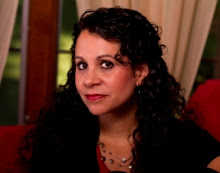Action vs. Summary
By Tricia Goyer
When it comes to writing fiction there are two ways to write scenes. One is
to "show" the action. The other is to "summarize," which is called
narrative. How do you pick which to do when?
1. Consider the importance of the scene. I've been working with some new
writers and one common mistake is that they give equal weight to everything.
The scenes that should be more in-depth, including dialogue, are the ones
that *highlight action.* Also, check with each scene to make sure it's
crucial to the story.
BUT . . . if the information is simply a connecting point for two more
powerful scenes, then use narrative summary. Sum things up and move to the action.
Finally, if it isn't crucial for the story (the story can't be told without
it) cut it.
2. Consider the pace of the scene. In fiction, most books do not have long
passages of narrative summary. We go back to the old saying, "Show don't tell." Narrative summary is telling. Instead you need the reader to *see* what's happening with your characters. Better yet, *live* what's happening because you've pulled them into the scene.
One way to get a good idea of pace, is to read books that you love, books
that are similar to your own, and preferably books that are best sellers!
Jack Cavanaugh says the best way to get a sense of flow, is to type out some of your favorite passages from your favorite books. First of all, it makes you slow down and notice what the author is doing. Second, after 10-15 minutes you have the natural rhythm in your head and when you move over to our manuscript then hopefully you'll be able to keep with that rhythm.
3. Turn off your internal editor. When you're writing, think *people and
action,* don't think about the mechanics. Let the people and action tell
your story. When I write my novels, I write at least 1,000 words at a
sitting, and I try not to stop. I don't look at spelling or grammar, etc. I
don't go back and read what I've written, until the next day. I just jump
into the book and let the story take me along.
Friday, September 29, 2006
Subscribe to:
Post Comments (Atom)

1 comment:
Great advice and very timely as I sit to write the first chapter on my cozy mystery.
Post a Comment